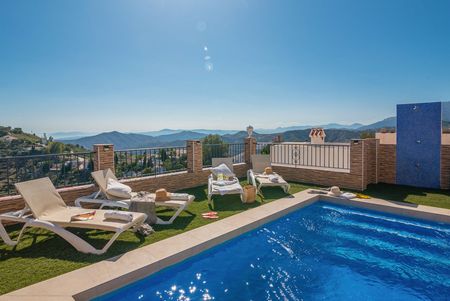When you’re planning your trip to Andalusia, don’t miss the capital of the Costa del Sol. Find out everything there is to see and do in Malaga, together with Ruralidays.
Malaga city is the capital of the Costa del Sol and the sixth-largest city in Spain. It has the fourth largest airport in the country, and welcomes millions of tourists every year. Hence, there is always something to see and do in Malaga.
The city is bordered to the north by the Montes de Malaga Natural Park, which towards the east, turns into the landscapes typical of the Axarquía region, with higher peaks such as the Pico de Santo Pitar (1,020 metres). Towards the west, flatter plains make up the area known as Hoya de Malaga or Malaga Valley, a depression in which the Guadalmedina and Guadalhorce river basins meet.
The ‘city of paradise’, as the poet Vicente Aleixandre called it, spreads over some 12 km, and in more or less the centre is the old town, home to most of the city’s historical monuments and points of interest for tourists.
How to get to Malaga
As mentioned before, the city is well connected to both the rest of Spain and Europe, as well as the rest of the world, thanks mainly to its international airport. The Malaga – Costa del Sol airport, also known as Pablo Picasso airport, has flights landing every 5 minutes and offers connections to all European capitals, many Spanish cities, and even far-flung cities in the Americas. From the airport, you can reach the city centre (a distance of 7 km/ 4 miles on the Cercanías C1 commuter train (destination Malaga – Alameda Principal) or Bus A. Check out more information on how to get to the centre of Malaga from the airport, here.
Both the Cercanías train and bus A stop at the Malaga María Zambrano train station, where high-speed trains arrive from and depart to Seville, Madrid and Barcelona amongst others.
Next to the train station you’ll also find the bus station. Thanks to the many connections available, you can reach any part of Malaga province, the rest of Andalucia, and even other regions in Spain.
If, ultimately, you prefer to get around Malaga by car, the city is accessible thanks to the A-7 and AP-7 highways, as well as an extensive network of roads that connect the capital of the Costa del Sol to the rest of Spain.
Transport in Malaga
Remember that there is a wide range of options to get around Malaga.
Buses in Malaga
The urban bus network, managed by EMT (Empresa Malagueña de Transporte) offers services through the entire city. The ticket price is €1.30. If you’re planning to stay for more than a couple of days, the best option is to buy a rechargeable card; 10 journeys cost €8.30, and you can stop off for up to an hour when transferring from one route to another. This option is also valid if you are travelling with other people, as the multi-trip ticket allows for multiple validation.
Malaga underground
Since July 2014, Malaga has had two underground train lines. From the Palacio de los Deportes to the train and bus station (El Perchel), and from there to the university. The price of a ticket is €1.35 plus €0.30 for the physical ticket that will be printed out. This ticket is rechargeable, meaning you don’t need to buy another one in future. Additionally, as with the bus, the underground ticket can be validated multiple times.
Timetables and frequency: underground trains run every 6 to 10 minutes, and the stations are open from 6.30 AM until 11 PM on Monday to Thursday, and until 1.30 AM on Fridays and the eve of holidays; from 7 AM to 1.30 AM on Saturdays, and until 11 PM on Sundays.
Other means of transport in Malaga
If you’re in a bit more of a rush, why not make use of the Malaga taxi service? The companies Unitaxi and Taxi-union are the most widespread in Malaga city.
You can even use the Malaga bike service to get around the entire city.
History of Malaga
Malaga is one of the oldest cities in Europe. It was founded by the Phoenicians in the year 800 BC, and given the name of Malaka, although at the time it was only a trade centre based around a port. The Greeks founded neighbouring Mainake, which was destroyed by the Carthaginians, who in turn succumbed to the Romans at the end of the 3rd century BC. Under Roman rule, trade grew and buildings were constructed which remain to this day, the Teatro Romano/ Roman Theatre amongst others. Germanic peoples, Byzantines and Arabs ruled the city over the following centuries, and it was the latter who gave the city its definitive name of Malaga. In 1487, during an intense siege, it fell into Christian hands, and its reconquest was to mark the end of the Nasrid kingdom of Granada.
During the 16th century the town’s population grew, and many churches and convents were built. In the following century, Malaga underwent various changes due to epidemics and natural disasters such as the flooding of the Guadalmedina river.
In the 18th century, it managed to recover from its crisis thanks to the economic surge driven by the Larios and Heredia families, who the city thanked by means of statues and naming some of its main streets after them.
In the 19th century, Malaga became one of the most significant cities behind the triumph of liberalism in Spain. In this century, the city also began to take its present shape: to the west, the proletarian neighbourhoods and factories; to the east, the mansions of the new bourgeoisie.
At the start of the 20th century the city went through an industrial crisis that deepened during the Civil War. Over the course of this century it was to become the capital of the Costa del Sol, one of the most important tourist areas in the whole country. By the 21st century, the city had managed to turn itself into a fresh, modern place with appealing and varied tourist attractions.
What is there to see in Malaga?
There are many suggestions of what to see and what to do in Malaga at any time, making it easier for you to get the most out of your holidays in this city. Additionally, the surrounding areas, as we will see later on, are also highly recommended.
Meanwhile, take a look at a suggested culture trail so that you don’t miss any must-sees in the city of Malaga.
Old town
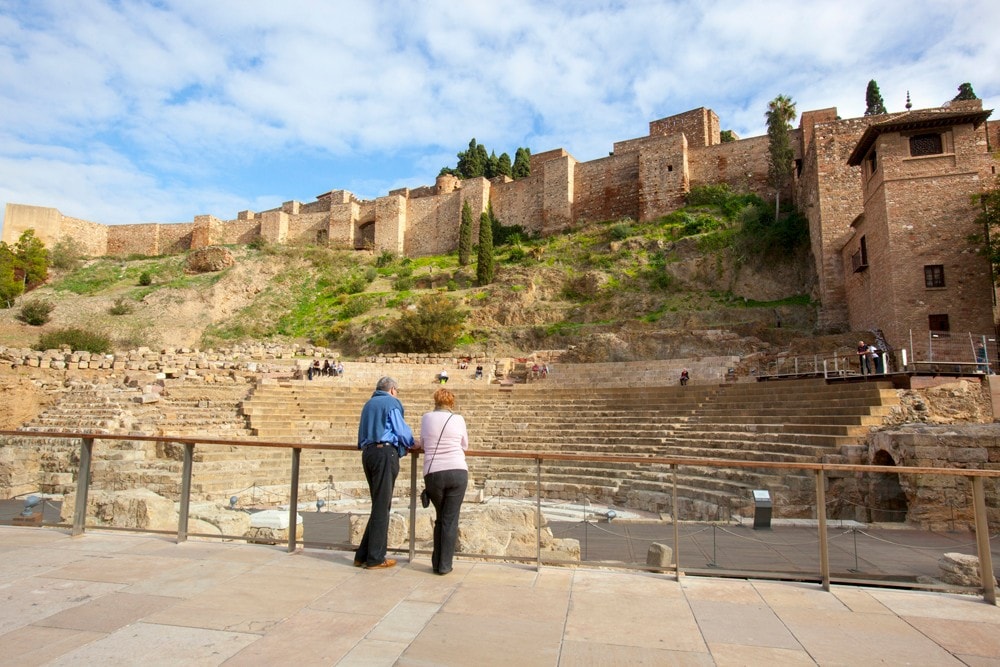
Begin the trail at La Alameda Principal, where all of the buses and Cercanías trains from the airport arrive, and head to the Alcazaba and Roman Theatre. The theatre, dating to the 1st century AD, has a similar structure to the one in Acinipo, in Ronda. Meanwhile, the Alcazaba, dating to the 9th century, is one of the most remarkable Muslim fortresses of its time, thanks to its triple-fortified compound.
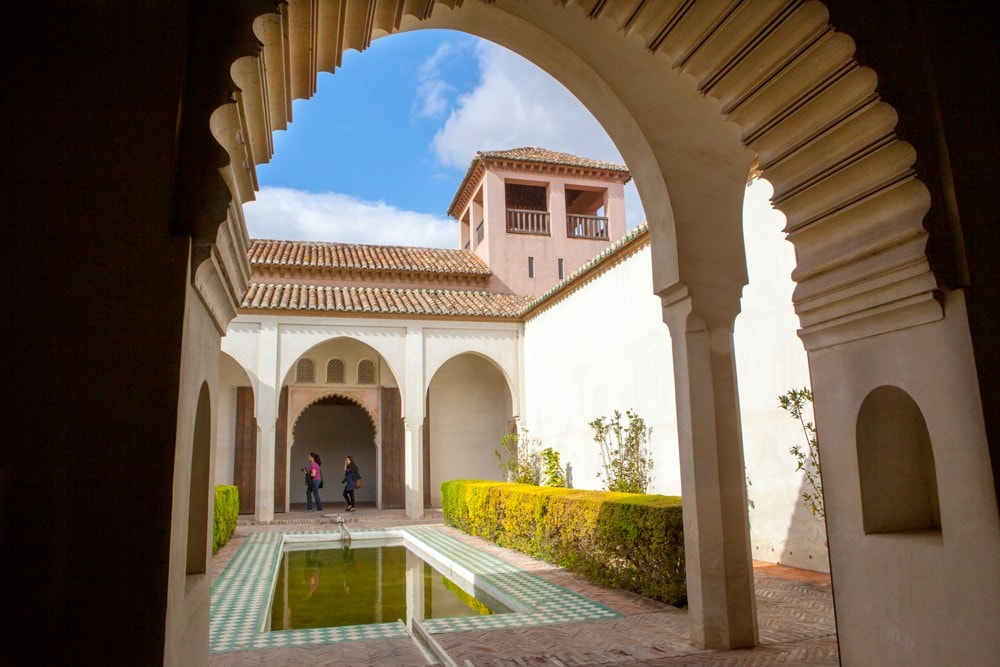
From the Alcazaba, you can head up to the Gibralfaro Castle via a passage that runs between two walls, called Coracha. From the stunning viewpoint of the castle, you are afforded breath-taking views over the city.
A few metres away you will find the Cathedral, begun in the 16th century over the remains of an old aljama mosque and never completed, which has seen it given the affectionate nickname of ‘La Manquita’ (half-finished). Inside you can admire how different architectural styles live side by side (Flamboyant, Renaissance, Baroque and Neoclassical).
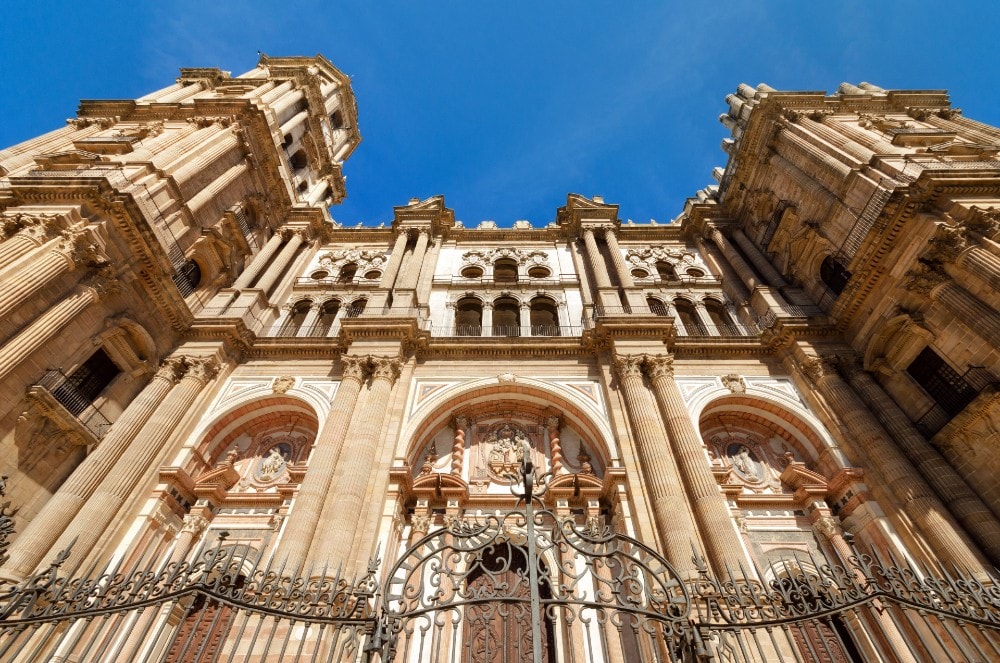
To the left of the cathedral, in the Plaza del Obispo, is the Palacio Episcopal, a building complex comprising constructions from the 16th and 17th centuries and on the upper part of which is a large niche that houses an image of the Virgen de las Angustias.
Head over to Calle Larios, the Plaza de la Constitución, the Pasaje de Chinitas and the Calle Calderería where it won’t take long for you to find an excellent restaurant to try some of the exquisite local cuisine.
Opposite the cathedral’s Puerta de Los Naranjos is Calle San Agustin, where the Palacio de los Condes de Buenavista is located, one of the few Renaissance-era civil constructions in Malaga, dating back to 1520 and home—since October 2003—to the Picasso Museum of Malaga.
From the museum, heading along the pedestrianised part of Calle Granada, stands the Iglesia de Santiago church, where baby Pablo was baptised and which is part of the Picasso Trail in Malaga. A few metres further up from this church is the Plaza de la Merced, a meeting place for young Malagueños and Erasmus students, thanks to the plentiful bars and restaurants found here.
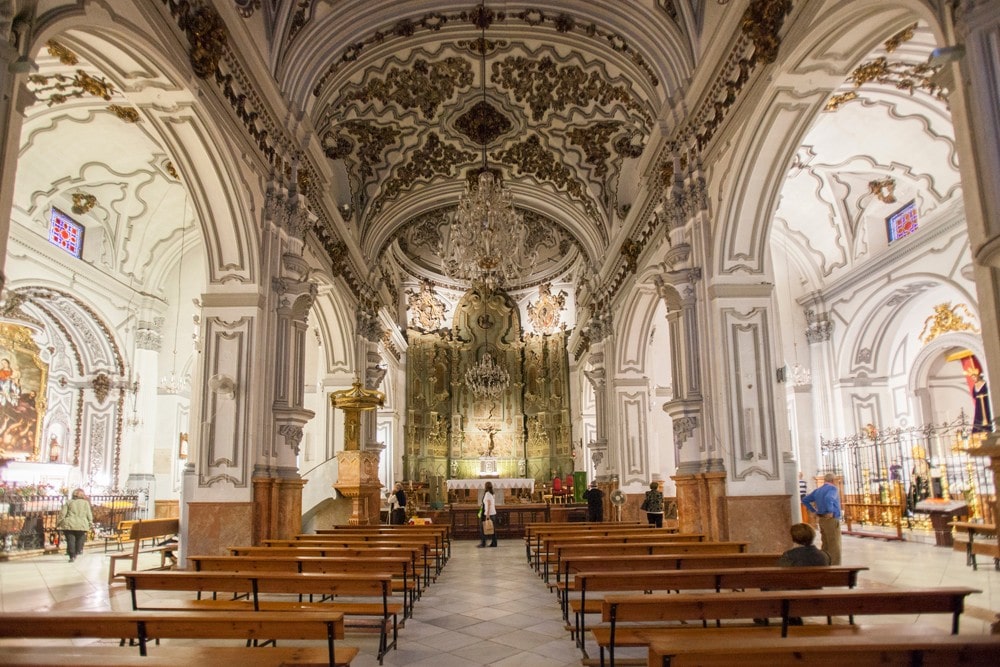
Adjacent to the Plaza de la Merced, where Calle Alcazabilla starts, are found the rear of the Picasso Museum, the Roman Theatre, the entrance to the Citadel, and, opposite to it, the Palacio de la Aduana, one of the most emblematic buildings in Malaga, built in the early 19th century to replace the old customs house that was located in Puerta del Mar.
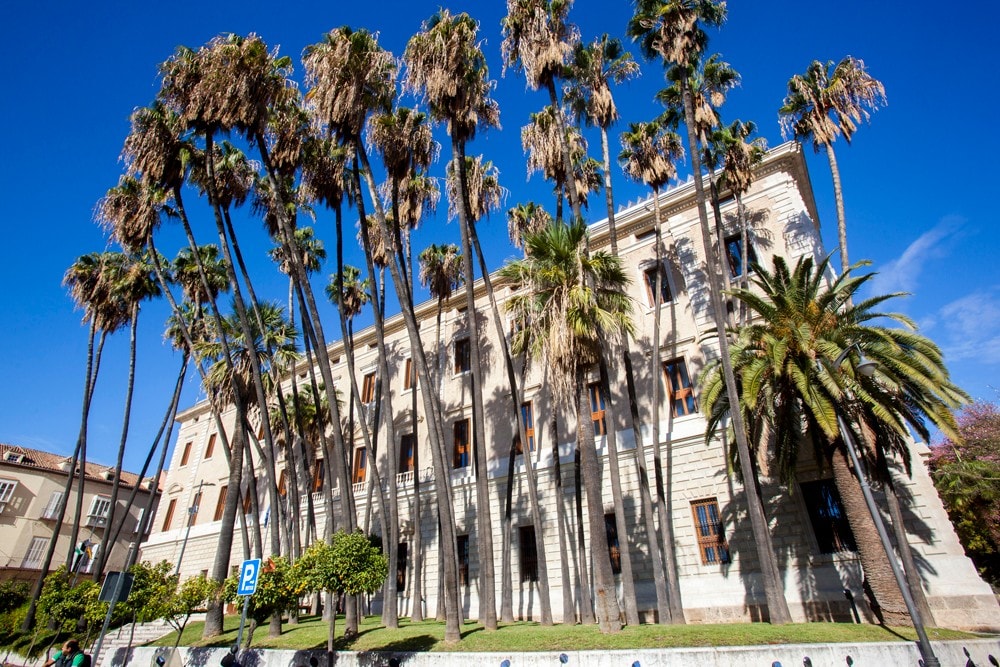
Spreading out next to the Palacio de la Aduana is the Paseo del Parque, a promenade between the port, the Cortina del Muelle and the foot of the Alcazaba. Measuring approx. 800 metres in length and built on land reclaimed from the sea at the end of the 19th century, this green space is more of a botanic gardens than a public park. Here, many tropical and subtropical arboreal species have easily acclimatised, unusually so for Europe, with some specimens that are unique to our continent and which are guaranteed to grab visitors’ attention.
Running parallel to the Park is the Avenida de Cervantes, where three notable buildings constructed at the start of the 20th century are located: the old Post Office, today the Rectorate of the University of Malaga, and built in an interesting neo-mudejar style; the Banco de España, in an elegant neoclassical style; and the Town Hall, in an understated Baroque style.
Behind the town hall and under the southern wall of the Alcazaba are the Gardens of Puerta Oscura, where an ancient Roman villa was uncovered.
The Paseo del Parque meanders east to the Plaza del General Torrijos, at the centre of which is the Fuente de las Tres Gracias, dating to the 19th century and which used to be located in the Plaza de la Constitución. If you continue along the Paseo de Reding, on your right you’ll find the Bullring (19th century neo-mudejar).
Back at the city centre, go to the Plaza de la Marina, between the port and the two main streets in Malaga, Calle Larios and Calle Alameda. This urban space is presided over by the monument to the Marquis of Larios, created by Mariano Benlliure. The Marqués de Larios was the driver behind Malaga’s new urbanism, and it is thanks to him that the street bearing his name was built, connecting the port area to the Plaza de la Constitución in a straight line.
Calle Larios flows into the Plaza de la Constitución, an old Moorish marketplace that was turned into the square after the Christian conquest. Renovated at the same time as Calle Larios, in this square you will find the Renaissance-era Fuente de Génova, which used to be located in one of the park’s gazebos.
Behind the Plaza de la Constitución is the Iglesia de los Santos Mártires or Church of the Holy Martyrs Ciriaco and Paula, the patron saints of Malaga. Construction of the church was ordered by the Catholic Monarchs.
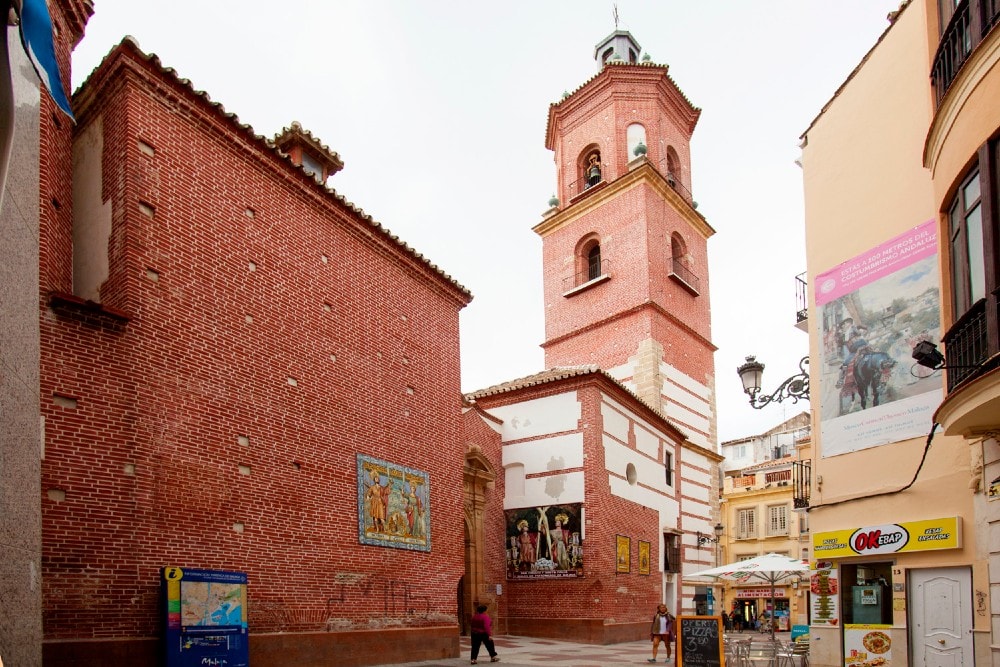
In the Plaza de Arriola is the Mercado Central de Atarazanas, which still has its original Puerta de las Atarazanas, i.e. the gate from the mediaeval shipyards. Although it has been somewhat restored, the gate still has a large, pointed horse-shoe arch, the sole remains of the great building measuring 5,000 square metres that in Christian times served as the arsenal, but which collapsed after the explosion of some gunpowder mills in the 17th century. Following its reconstruction it was used as a hospital, and by the 19th century it served as the School of Surgery as well as an artillery barracks, until in 1868 the decision was taken to demolish the entire building—except for the southern gate—to build the market.
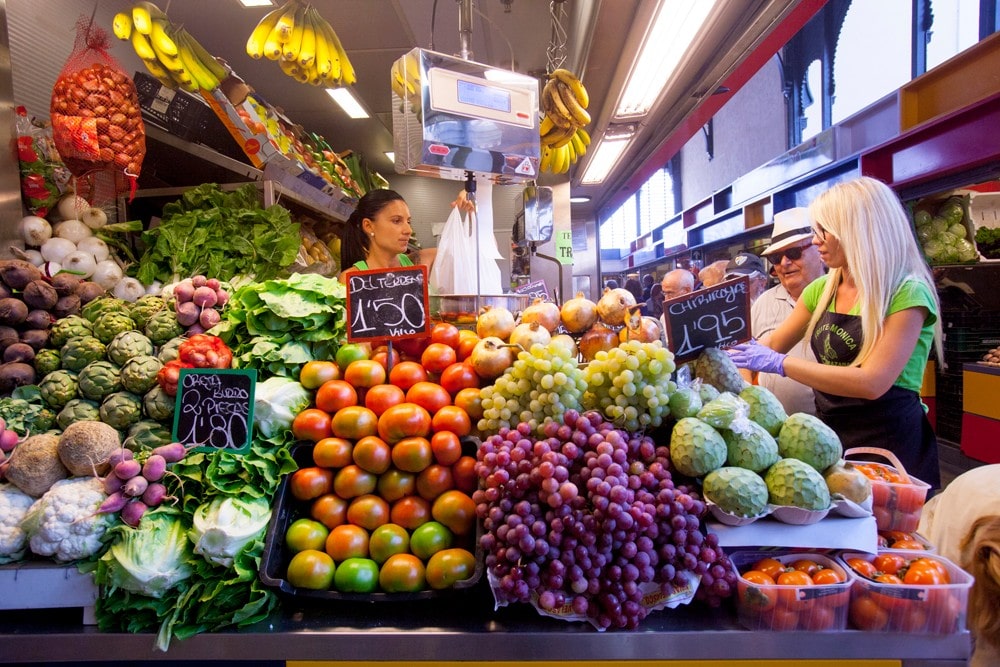
Outside of the old town, but intertwined within the urban landscape, is the Santuario de la Virgen de la Victoria, which was initially a chapel built at the spot where Ferdinand the Catholic raised his camp in preparation to take Malaga. In the 17th century, the chapel was replaced by a Baroque church funded by the Count of Buenavista.
Museums
Malaga has almost 30, thanks to which it is known as the ‘city of the museums’, many of which are open to the public for free on Sundays.
First and foremost is the Picasso Museum, located in Calle San Agustin, inside the Palacio de los Condes de Buenavista. Here, you can admire the private collection of Christine Picasso, a permanent collection spread over various rooms where over 200 of the Malaga artist’s works are displayed.
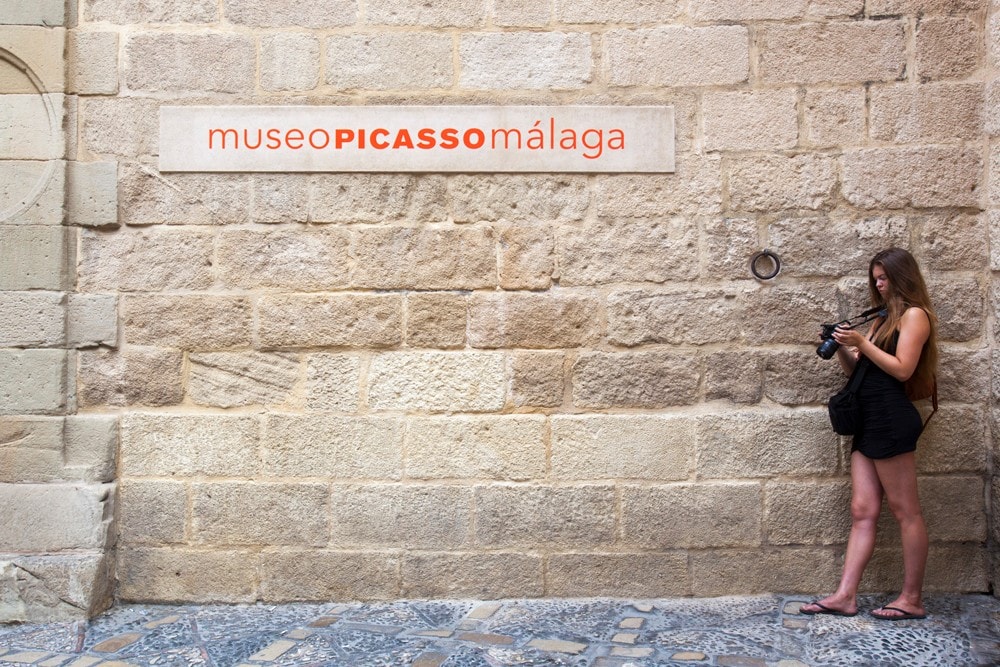
On the Pasillo de Santa Isabel, parallel to the Guadalmedina river, is the Mesón de la Victoria, built in the 17th century on top of an old 15th century mansion. Since the 70s, this has housed the Museo de Artes y Costumbres Populares or Art and Popular Customs Museum, a highly recommended visit where you can reflect on the rural, mining, industrial and bourgeoisie life of Malaga in centuries past through the fine collections of utensils, tools and other items from yesteryear.
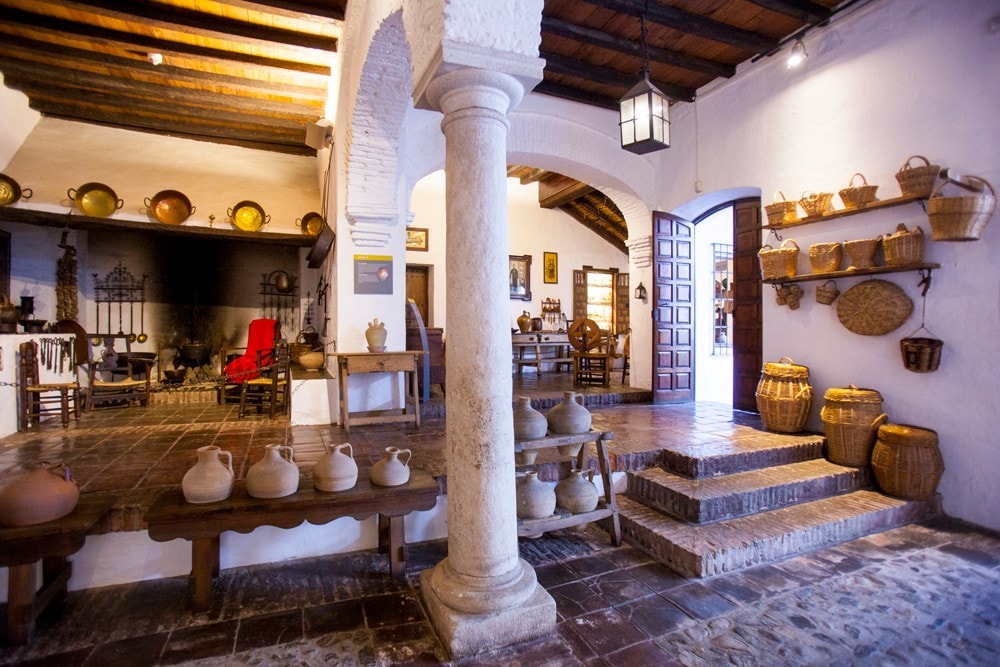
Another museum worth visiting is the Carmen Thyssen, which is really close to the Plaza de la Constitución and where you can discover a collection of paintings of major importance. On exiting, head down towards the sea through the Puerta del Mar, cross Alameda Street and you’ll reach Soho.
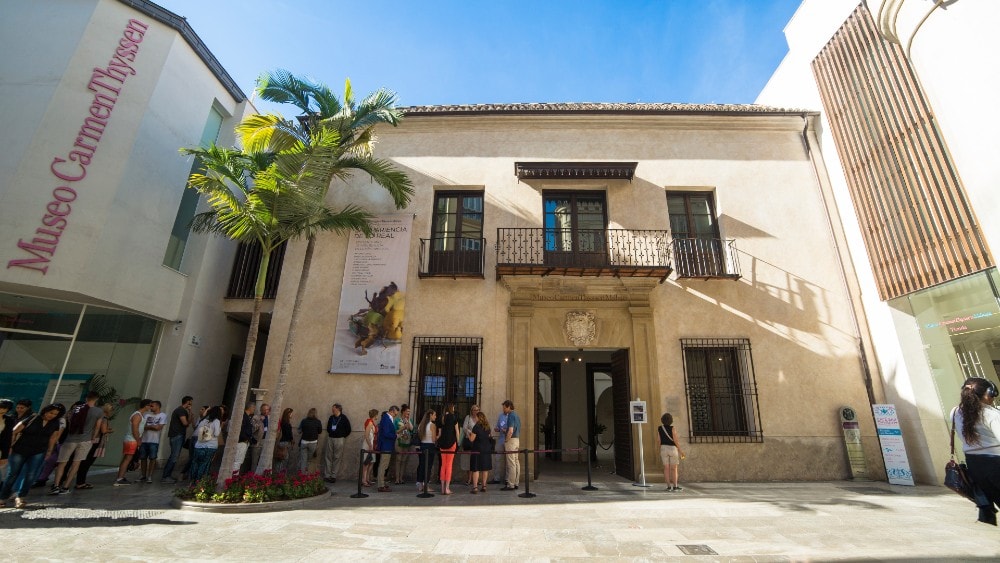
After browsing the shops and cultural sites, head over to Muelle Uno to visit the Pompidou Centre. This was opened in 2015 and is the first international ‘branch’ of the famous Centre Pompidou in Paris.
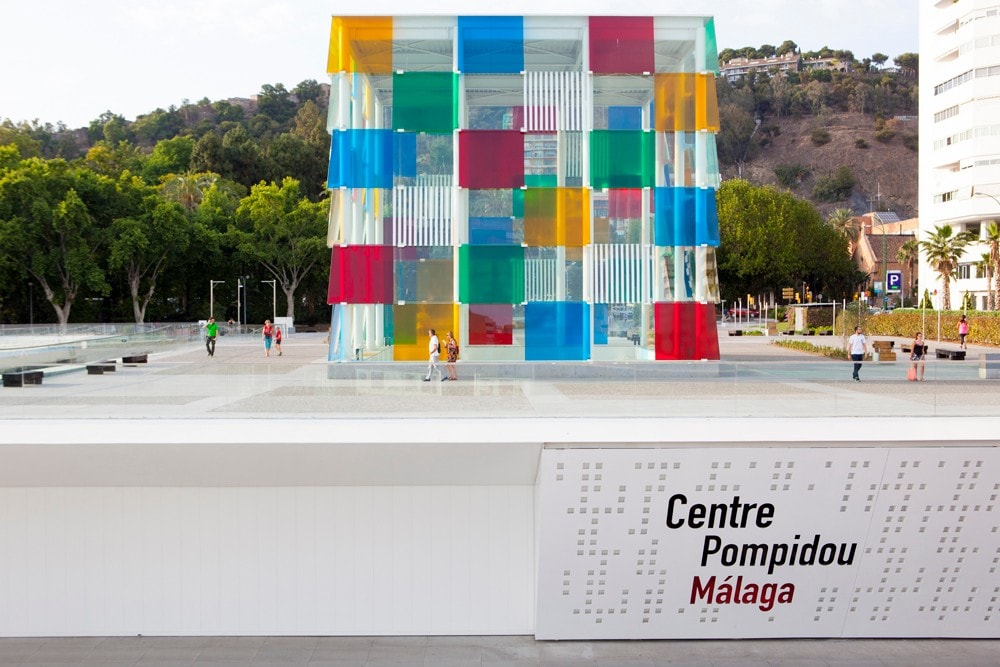
When you leave here, walk towards the Guadalmedina river and turn to the right to visit the Centro de Arte Contemporáneo (CAC)/ Contemporary Arts Centre, to check out the latest art trends in a museum that is distinct, tranquil and perfect for enjoying art without the crowds.
Moving on to the west of the city, you will find two more museums that are worth a visit: the Museo Ruso/ Russian Museum and the Museo Automovilístico (Car Museum), located in the Tabacalera building.
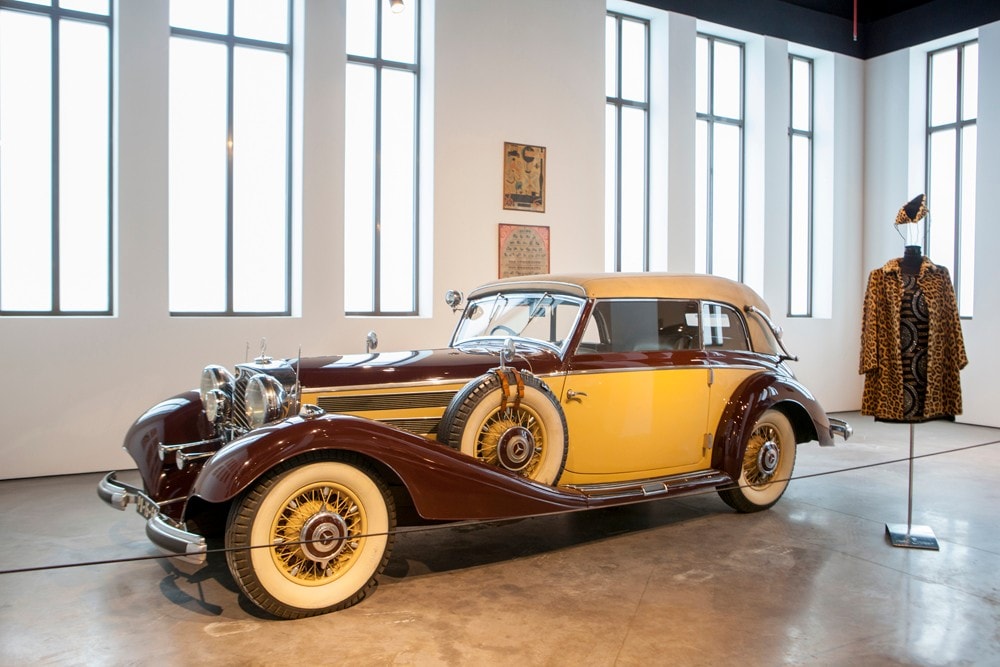
Typical neighbourhoods
It was after the walls were lost that urban expansion really began, with several neighbourhoods annexed by the urban nucleus of Malaga. Two of the typical neighbourhoods that are worth paying a visit to better capture the essence of the city are the western zone and Pedregalejo, to the east of the old town.
The Paseo Antonio Banderas promenade runs along the beach of the Misericordia and borders the quay of La Térmica and the Paseo Antonio Machado promenade. There are many sports activities to do here, and of course, you can enjoy espetos or fish skewers in any of the beach bars in this prime western part of the city.
The second is Pedregalejo. By the beach, this neighbourhood went from being a haven for fishermen to the neighbourhood it is today. Luckily for you, the beach bars here are perfect for savouring one of Malaga’s gastronomic delights: espeto de sardinas asadas or skewers of roasted sardines. You’ve got to give it a go and see for yourself why such a simple dish is still delighting people today.
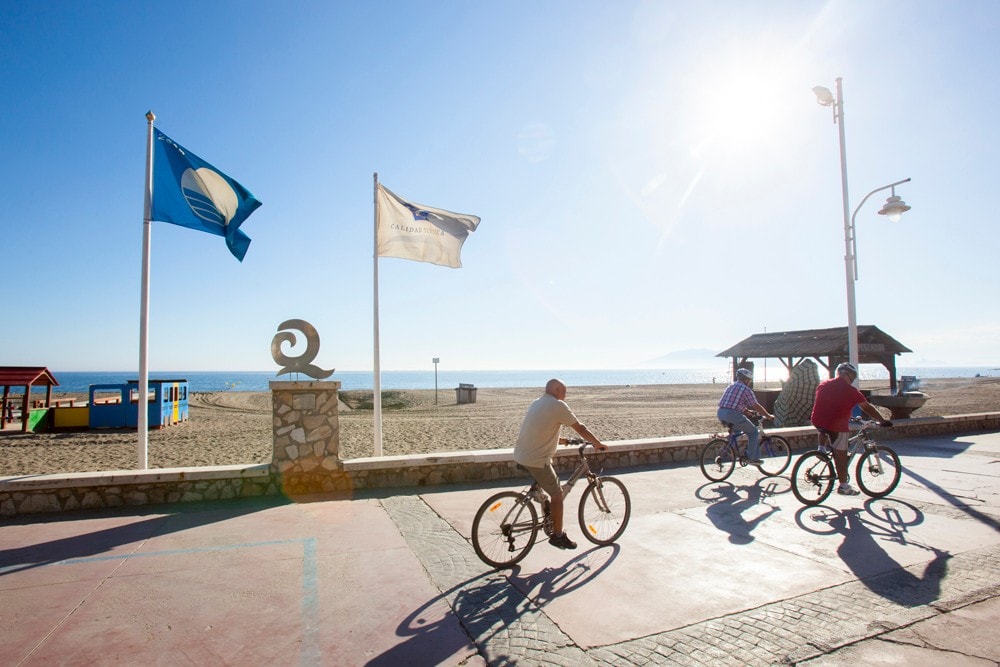
The botanic gardens
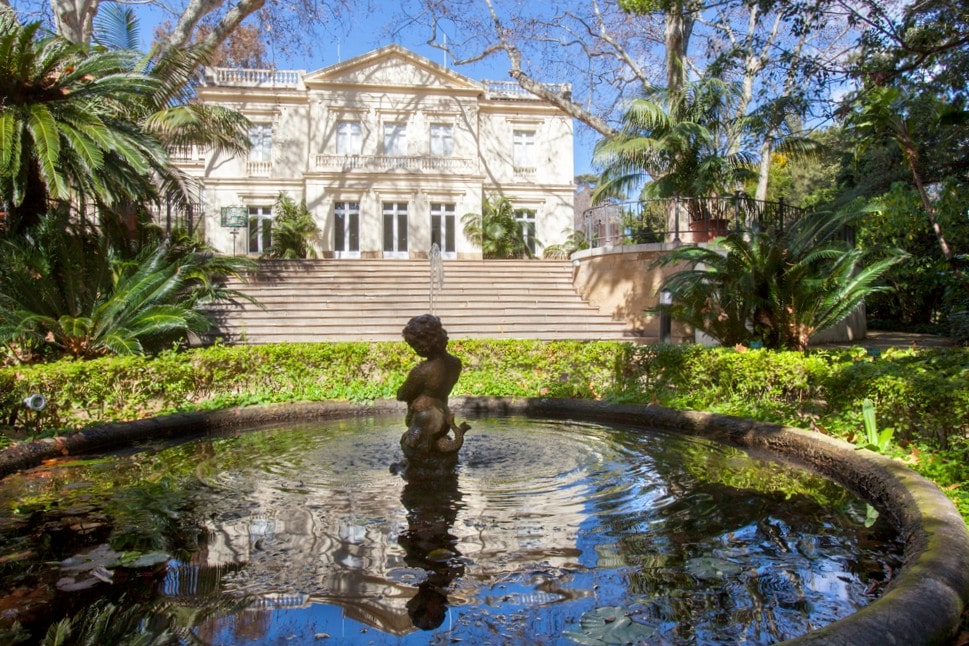
Exiting Malaga on the Pedrizas highway (A-4; N-331), a sign indicates the road to the Finca de la Concepción, without a doubt one of the best tropical gardens in Europe. Constructed in the 19th century by the Marquises of Casa Loring, who built a small Classical-style palace here, the estate boasts an inordinate richness in terms of flora, among which are scattered bridges, small waterfalls and a Doric temple. The complex, where several films have been shot, was declared a Historic-Artistic Garden in 1943 and has been acquired by the City Council.
What is the best time of year to visit Malaga?
Malaga is a city that can be visited at any time of year, because there’s always something interesting to see or do. The climate, with an average temperature of 19 degrees, is always perfect to enjoy the sun and the many fiestas that are held throughout the year. To find out what you can do in each season of the year in Malaga, take a look at this post.
What are the most popular festivals in the city?
Malaga’s annual programme of festivals is packed with events and celebrations that shouldn’t be missed.
Carnival
When: 21st February -1st March 2020
The Malaga Carnival is celebrated on the city centre’s streets during Carnival weekend and provides a unique opportunity to learn the most satirical opinions on the year’s most notable events. Highlights include the great Carnival procession, with a parade through the old town of Malaga on the penultimate Sunday of Carnival and the famous ‘Entierro del Boquerón‘ or “burial of the anchovy” on the final Sunday.
Semana Santa/ Easter
When: from 5th – 12th April 2020
During Easter, Malaga becomes a giant stage where cofradías or brotherhoods, with their thrones on the streets, re-enact the Passion of Christ amidst overflowing public zeal. Malaga’s Holy Week is one of the best known in Spain.
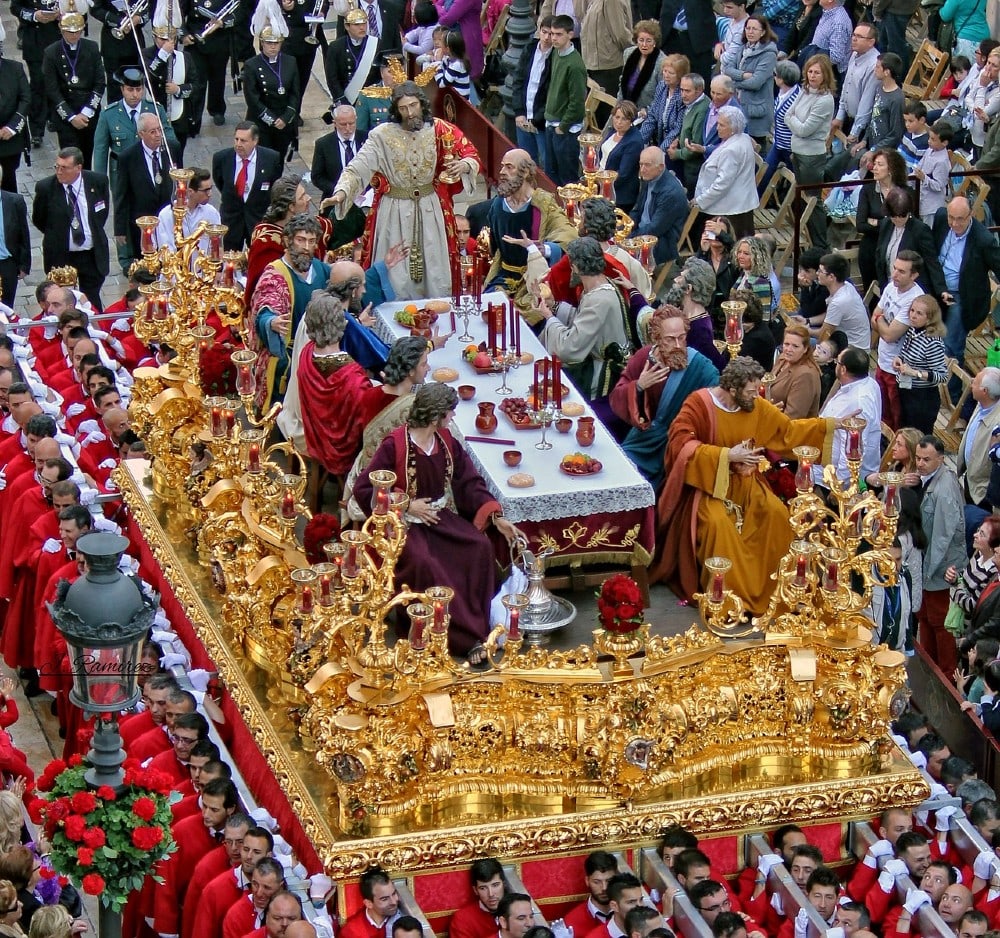
Photo courtesy Varalesdepasion on Pixabay
San Juan
When: night between 23rd and 24th June
On 24th June the festival of San Juan is celebrated, with the traditional moragas on the beaches of La Misericordia and La Malagueta.
Virgen del Carmen
When: 16th July and following Sunday
On the day of the patron saint of sailors and fishermen, a procession takes place in the sea off the beaches of Pedregalejo and El Palo. The following Sunday, festivities take place on the beaches of La Malagueta, in El Perchel, and the neighbourhood of Huelin.
Feria de Málaga/ Malaga Fair
When: from 15th – 22nd August 2020
The Feria de Málaga is famous for being held in the city centre (the Feria de Dia or Day Fair) and at the Cortijo de Torres, which hosts the Real de la Feria (Night Fair). While in the centre the festivities are celebrated in traditional bars, at the Real you head over to private or public ‘booths’ to dance or have a drink.
Christmas
When: from 29th November to 5th January
Over the entire Christmas period, Malaga boasts a wide range of things to do and cultural events for everyone. The famous ‘illuminations’ on Calle Larios have become a must-see event, likewise the two nativity scenes on display at the cathedral and town hall. The stalls along the Paseo del Parque are perfect for hunting down last-minute presents, while at the market in the Plaza de la Marina, you can savour delicious specialities typical of the festive season. The Cabalgata de los Reyes Magos or Three Wise Men Procession, on the 5th of January, marks the end of Christmas celebrations.
Malaga cuisine
Given the city’s cosmopolitan, touristy nature and the large number of restaurants found here, in Malaga you can eat whatever type of food you like, whether local, regional, or international. Likewise, the range of eateries covers every budget, from modest, cheap snacks to the most select, exquisite restaurants—some with Michelin start included.

One highlight of the traditional local cuisine is pescaíto frito or fried fish, Malaga’s dish par excellence. Pescaíto frito can include many types of fish, but most commonly features anchovies, mackerel, mullet, squid, hake and, by extension, skewers of sardines, clams and coquina clams. The list goes on, but this is the most common mix. This culinary speciality is particularly typical at restaurants near the beach, known as ‘chiringuitos‘ or beach bars, although they can be served anywhere in the town.
Other particularly malagueño dishes include gazpacho, ajo blanco, gazpachuelo, ensalada malagueña (boiled potatoes, cod, orange, hard boiled egg, olives, onion and olive oil) or the plato de los Montes, typical at the many country inns around the outskirts of town, and comprising chips, pork loin in lard, chorizo, fried peppers and fried egg.
Another typical dish is the campero, a sandwich that normally features lettuce, cooked ham, mayonnaise and ketchup, to which many other ingredients can be added.
Fun facts about Malaga
- The clocks of the city’s underground system only mark 59 seconds per minute, with the final second marked by the minute hand. This is because the clocks were manufactured in the United Kingdom, where this system is used to guarantee the trains’ punctuality.
- El Cenachero statue is one of the city’s greatest emblems, and depicts a man carrying two baskets of sardines. This trade has long since disappeared.
- The city’s English cemetery, dating to the 19th century and located on Avenida Pries, 1, was the first Protestant cemetery in Spain.
- Coffee is ordered differently in this city and there is some highly specific lingo for doing so. Take a look here for how to order yours and which are the best bars in Malaga for breakfast.
The Costa del Sol
Malaga is the epicentre of a tourist mecca known as the Costa del Sol, which includes resorts such as Torremolinos, Fuengirola, Marbella, Estepona and Mijas. Covering a total of around 800 km2/ 500 square miles, this is a strip running along the Mediterranean coast where you can revel in an endless range of things to do and activities to enjoy.
Quick facts about Malaga
- Area: 398 km2
- Population: 569.005 (2016)
- Demonym: Malagueños.
- Location: Malaga is on the southern Mediterranean coast, some 50 nautical miles from the Straits of Gibraltar and 520 kilometres/ 323 miles from Madrid.
- Average annual temperature: 18.5ºC
- Annual rainfall: 470 l/m
- Website: http://www.malagaturismo.com
Malaga Tourist Office
The main Tourist Office in Malaga is located in the city centre. In Malaga, there are also Tourist Information Points: one beside the Alcazaba, another in the Vialia shopping centre and a third at Pablo Picasso Airport.

Address: Plaza de la Marina, 11
Phone: 951 92 60 20
Email: [email protected]
Opening hours: from 1st November to 31st March, from 9 AM to 6 PM; 1st April to 31st October, from 9 AM to 8 PM.
Where to stay in Malaga
Bearing in mind the above information, it goes without saying that this is an interesting, must-see destination where you can have fun and enjoy all of the city’s attractions—meaning you’ll need somewhere to stay.
If you prefer peace and want to relax on the Costa del Sol, take a look at nearby towns such as El Rincón de la Victoria, Torre del Mar or Torrox. The latter is about 40 minutes from the centre of Malaga, and can be reached along the A-7 motorway.
How about renting a holiday home with pool in Malaga, with stunning beach views and everything you need to sit back and relax, bask in the sun, and not worry about a thing unless it involves unwinding and recharging your batteries? Use it as a base to discover the areas outlined above, as well as the incredible Serranía de Ronda, where you can enjoy the unique and surprising scenery.
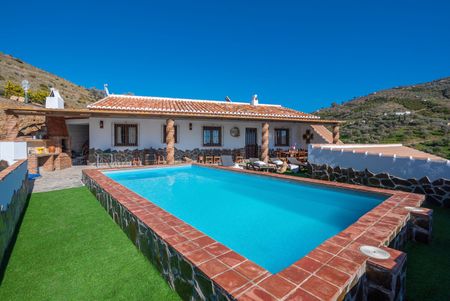

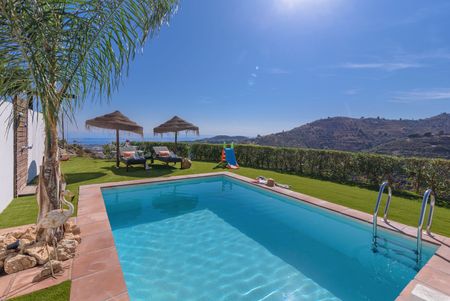
We hope we’ve helped you to find out what to see in Malaga and above all, to make the decision to visit a city that’s sure to captivate you with its undeniable appeal. Plan your holiday now, let yourself be carried away by its charms and it won’t be long before you’re having a truly unforgettable experience.






